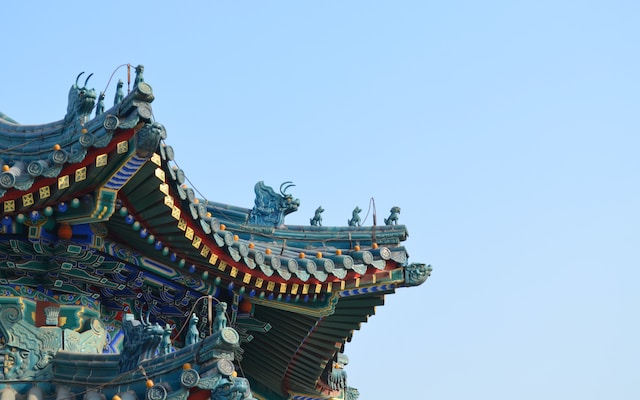
The majority of case titles in mainland China consist of two parts, namely the types of disputes and the information of the parties concerned, the former one of which is referred to as the cause of action (“案由” in Chinese). For example, in the case of infringement upon computer software copyright, Microsoft Corporation v. Shenzhen Lanfei Technology Co., Ltd. (Case No. (2016) Yue 0304 Min Chu No. 4777), and the "infringement upon computer software copyright" in the initial part is the cause of action in this case.
Criminal cases have case numbers, but they have no cause of action. The title of the criminal case generally consists of the parties concerned and the charges they are accused of. The causes of action of administrative cases are generally determined by the combination of the types of the involved administrative organ and the nature of administrative acts concerned. In this post, we put more emphasis on the cause of action in civil cases rather than in administrative or criminal cases.
1. The development of causes of action in civil cases
Before 2001, there was no unified categorization of causes of actions in civil cases in China, and the titles of cases were summarized at the courts’ own discretion in accordance with the legal relationship involved in cases. With increasing caseload and increasing complexity of the cases, in 2001, Chinese courts began to try out a uniform list of cause of action. All civil cases throughout the country must be determined within the scope of the list. However, the PRC Supreme People's Court (SPC) has not explicitly explained the specific functions of the cause of action.
- To reflect the legal relationship involved in the case;
- To facilitate the parties to understand the types of cases accepted by the courts;
- To standardize the distinctive function of different trial divisions within the court;
- To assist judges in finding evidence for trial;
- To provide the legal basis for the judicial statistics.
In 2011, the SPC extensively renewed the list of causes of action again. Since then, the SPC has only made two minor additions to the list of causes of action without further extensive amendments.
2. How to determine the cause of action in the case
The causes of action in most cases are determined by the plaintiff when a lawsuit is filed. During the case filing, if considering that the cause of action chosen by the plaintiff is not in conformity to the nature of the dispute, the judge in the Case-filing Division can guide the plaintiff through the revision of the cause of action. During the trial, if the judge believes that the cause of action determined is inaccurate, the judge may change the cause of the case at his or her own discretion.
Causes of action in the list are divided into four levels, among which the causes of action at Level One covers the broadest and most general scope of cases, and the causes of action at Level Four covers the narrowest and most specific scope of cases. To illustrate more explicitly, we take relevant causes of action involved in disputes over lease contracts as examples:
According to the provisions stipulated by the SPC, the cause of action at Level Four should be given priority to apply; where there is no appropriate cause of action at Lever Four, the corresponding cause of action at Lever Three shall be applied and so on. In practice, the most frequently used cause of action is the cause of action at Level Three.
If a case involves multiple disputes, in theory, the case should have multiple causes of action. However, practically, most cases are generally titled with only one cause of action.
3. The function of the cause of action
First of all, there is a certain correlation between the cause of action and the competent court’s jurisdiction. In the “PRC Civil Procedure Law and the Interpretation of the SPC on the Application of the PRC Civil Procedure Law” (the Interpretation, 最高人民法院关于适用<中华人民共和国民事诉讼法>的解释), the competent courts which have jurisdiction to hear specific cases are basically determined by the cause of action. The competent trial courts may be varied depending on different causes of action. For example, in accordance with the Article 28 of the Interpretation, "cases about disputes over construction contracts of construction projects" shall be tried by the courts in the place where the real estate is located. As a result, for the disputes over the decoration contract of the family housing, if the cause of action is determined to be "the dispute over construction contract of the construction project", it can be heard under the jurisdiction of the court in the place where the real property is located; however, if the cause of action is determined to be "the dispute over decoration contract", the court in the place where the real property is located may refuse to accept the case on this ground and request the parties to bring a suit to courts in the place where the defendant resides or otherwise.
Secondly, the cause of action directly reflects the legal basis of the plaintiff's claim. The plaintiff's choice of the legal basis for litigation may have a substantial impact on the outcome of the case. For example, a cargo owner asked a warehouse to store batches of goods, and the two parties entered into a warehousing storage contract. After the goods were delivered to the warehouse, the warehouse was on fire and the goods were totally damaged and lost. At this time, the cargo owner can choose either "dispute over warehouse contract " or "torts dispute" as the cause of action for litigation. However, there are significant differences between the two causes of action: (1) choosing "the dispute over warehouse contract" means that the cargo owner takes the warehouse as the defendant and requires it to assume the responsibility for a breach of contract. At this time, the cargo owner only needs to prove the fact that the warehouse was on fire and the goods were lost, but unnecessary to prove the reasons causing the fire. The scope of compensation is also limited by the contract and the provisions of the PRC Contract Law. (2) choosing "torts disputes" means that the cargo owner needs to take the person who caused the fire as the defendant and requires him to assume the tort liability. In addition to proving the fact that the warehouse was on fire and the goods were lost, the cargo owner has to find the specific responsible person and prove the cause of the warehouse fire. Plaintiff’s burden of proof in torts cases is obviously heavier. But at the same time, the cargo owner may get more compensation than the liquidated damages stipulated in the contract.
If the cause of action is determined incorrectly, but the legal basis of the plaintiff's claim is clear, the judge will not frustrate the plaintiff's claim just due to the incorrect cause of action. For example, the plaintiff sues the defendant for a financing lease contract. The correct cause of action should be "the dispute over financial lease contract "; but if the plaintiff mistakenly chooses "dispute over lease contract " as the cause of action. Even if the cause of action has not been corrected, the judge should still try the case according to the relevant provisions governing the financial lease contract disputes, and would not render a judgment in favor of the defendant due to the wrong cause of action.
Thirdly, for the courts, the main role of the cause of action is to determine various functions of different trial divisions within the courts. Taking the SPC as an example, "disputes over construction contracts for construction projects" shall be heard by the First Civil Division; and "disputes over contracts for Sino-foreign joint ventures" shall be heard by the Second Civil Division. Because the judges in different trial divisions may have different logic or ways of thinking for the case trial, the parties can roughly learn about the specific division hearing the case according to the cause of action, and accordingly, adjust their litigation strategy. For example, judges hearing commercial cases tend to be more compliant to "Rechtsschein Theorie" and tend to focus more on the context of the contract when interpreting the contract, while judges in ordinary civil division pay more attention to the balance of interests of the parties and may interpret the contract beyond the context of the contract. In addition, some courts will compile standardized trial guidelines for all kinds of cases based on the categorized cause of action, which also makes it easy for judges to form a routine format in trying certain cases.
Fourthly, the cause of action helpfully directs the courts to pay attention to hot social issues and protecting new types of rights. In recent years, there has been an increasing number of cases where women suffer from employment discrimination and sexual harassment, and theses cases gain more and more public attention. Under the continuous appeal of the All-China Women's Federation, the SPC announced two more types of causes of action on 12 December 2018, namely "the dispute over equal employment rights" and "dispute over liabilities caused by sexual harassment". For the female plaintiffs in these cases, if they satisfy certain conditions, the government will consider providing them with some legal aids.
If you would like to discuss with us about the post, or share your views and suggestions, please contact Mr. Chenyang Zhang (zhangchenyang@yuanhepartners.com).
Contributors: Chenyang Zhang 张辰扬







